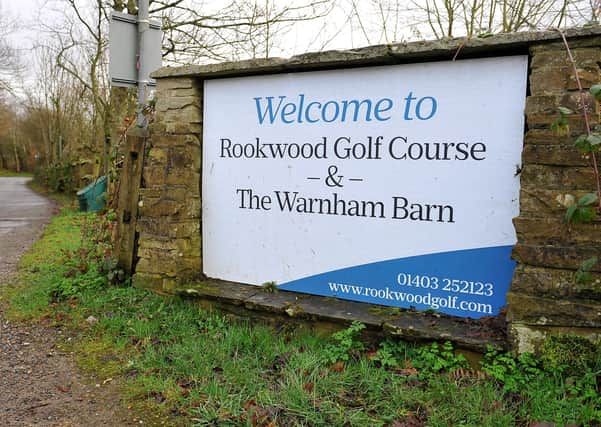‘Putting facts straight about Rookwood after HDC chief excutive’s comments’


In twice branding Rookwood Golf Course as an ‘underperforming asset’ in last week’s County Times, Glen Chipp (HDC chief executive) certainly nailed his colours to the mast. You can read Glen Chipp’s letter here.
Even with almost 40,000 rounds played there in 2020 (despite lockdowns), representing at least 100,000 healthy active hours for residents, and contributing around £50,000 annually to HDC revenues, Rookwood is still apparently considered of ‘insufficient value’ to retain.
Let’s put a few facts straight.
Advertisement
Hide AdAdvertisement
Hide AdThe land to accommodate the proposed new 750-home housing estate has a registered land charge, effective from March 27,1986, to pay (I quote) ‘a sum equivalent to 50 per cent of the net proceeds occurring within the period of 80 years’.
So that’s why I maintain that ‘overnight’ in 2066 HDC would be relieved from the obligation to forgo 50 per cent of development profits; 80 years is exactly what it says on the tin!
Additionally on this land, there are no restrictive covenants to overcome that would need to be ‘bought out’ by negotiation from 2066, if subsequently developed.
Mr Chipp’s letter makes it clear that there’s no independent financial assessment with the necessary complex calculations to compare the options of a short term sale with 50 per cent of proceeds lost, versus longer term retention with 100 per cent of proceeds retained.
Advertisement
Hide AdAdvertisement
Hide AdFrom his response it appears that a somewhat simplistic ‘in house’ analysis just assumes that a long-term land holding will only produce future ‘devalued’ money, without considering the inherent financial appreciation of the underlying valuable asset.
This is further complicated by the unusual ‘cliff-edge’ doubling of HDC’s share of the proceeds on March 27, 2066. Proper, independent advice is surely needed to satisfy Section 123 of the Local Government Act 1972, isn’t it?
Of course it’s absolutely correct to say that site allocations in the Local Plan are to be made primarily on planning grounds. But, the separate decision of the landowner (i.e. HDC) to promote the site for development at this time is a political one, and so should be founded on a robust ‘business case’ and approved by Cabinet and/or Council. When and by whom has this decision been made?
It seems to me to be unconstitutional, and certainly undemocratic, that apparently the major decision to promote Rookwood for development (and spend approaching £200,000 in the process) has never come before either of these committees of elected councillors, in advance of any debate to ‘approve’ the local plan.
Advertisement
Hide AdAdvertisement
Hide AdIs this a clandestine attempt to stymie the scrutiny by, and opinion of, members (and the public), in full knowledge that the local plan decision must focus on planning matters, and also inevitably be constrained by predetermination principles?
The alleged extra benefit of 45 years of council tax on these 750 homes is a complete red-herring as such homes built anywhere in Horsham district (be it north or south!) would attract council tax levies.
Finally the spectre was raised of a future ‘cash-strapped’ and remote unitary authority, perhaps involving Horsham, Crawley and Mid Sussex, making decisions.
That’s a fair point, but remember that significant potential savings in management costs should then accrue.
Advertisement
Hide AdAdvertisement
Hide AdFor example the £600,000 per annum current total cost for chief executives (see 2019/20 published accounts for the three districts, plus say 50 per cent of now departed Nathan Elvery’s infamous £236,930 annual package at WSCC) should reduce by at least two-thirds; similarly for directors.
Maybe then, ‘under new management’ (certainly trimmed down; hopefully enlightened), a revenue positive and well used facility (not to mention being a well-tended wildlife/ecology buffer for the adjacent nature reserve) will be cherished and not simply dismissed as an underperforming asset to be financially sweat.